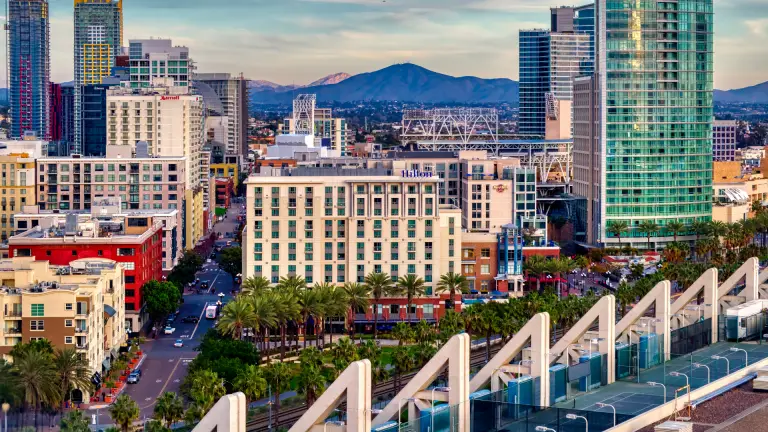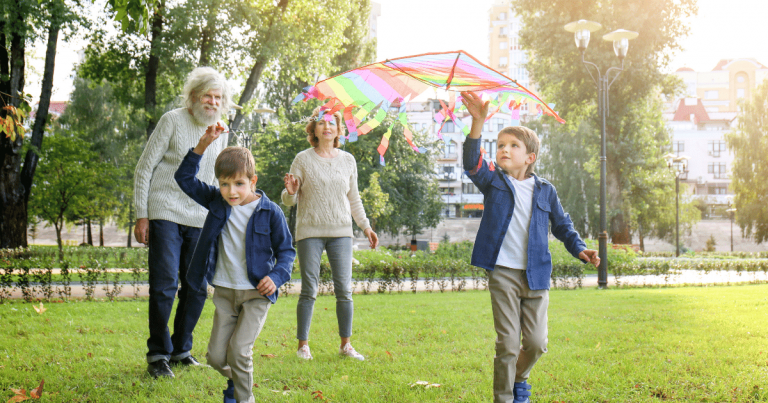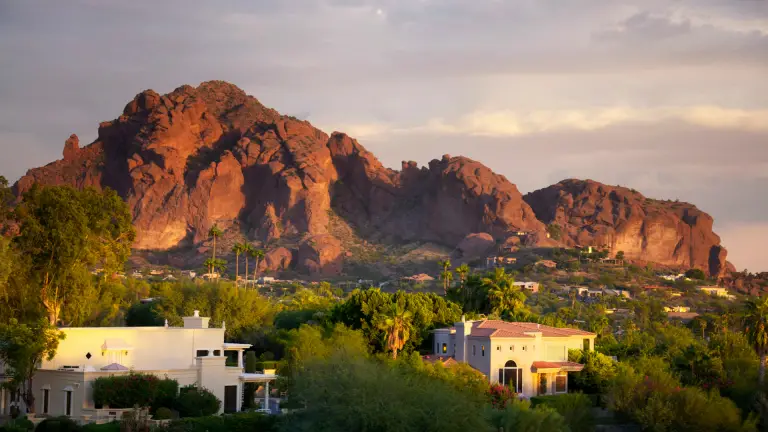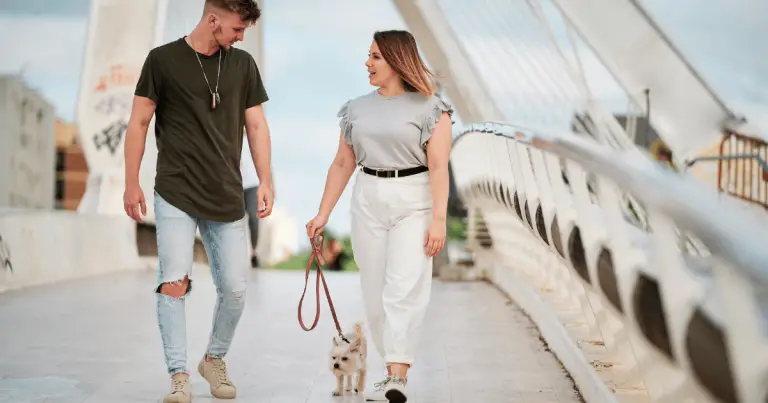Explore the Breathtaking Papago Park Butte Loop in Phoenix
Phoenix is a picturesque city for both residents and visitors. It boasts sunshine almost all year round, as well as a diverse range of tourist attractions and cultural sites. Papago Park is one of the most popular destinations in Phoenix, home to the Butte Loop Trail.

As the name suggests, the trail is a hiking loop that takes you to Papago Park’s towering buttes. In this blog post, we will discuss the Papago Park Butte Loop, what you can expect, and why it is worth visiting.
Understanding Papago Park
Papago Park carries a rich historical background that adds to its charm. It has been a cornerstone of Phoenix’s history since ancient times, with the Hohokam people making this area their home around 1,500 years ago.
It played a significant role during World War II as a POW camp and later as a VA hospital. In 1959, Papago Park was officially designated as a city park, marking its transformation into a recreational haven.
Papago Park is geographically located within the cities of Phoenix, Tempe, and Scottsdale, making it easily accessible. Its proximity to these cities and the extensive network of hiking and biking trails make it a favorite spot for locals and tourists.
The park’s role as a sanctuary for desert flora and fauna is one of its greatest attractions. It hosts diverse wildlife and plant species, offering a glimpse into the rich biodiversity that thrives in the middle of an urban setting.
From towering saguaro cacti to various bird species like the Gila woodpecker and Gambel’s quail, the park is a living testament to the resilience and beauty of desert ecosystems.
Papago Park Butte Loop Trail Overview
The Butte Loop Trail is a relatively easy hike that spans about 2.3 miles, making it ideal for beginners and families. In spite of its easy grading, the trail offers a diverse range of landscapes and features that are sure to captivate both seasoned hikers and newcomers.
The trail winds through massive sandstone buttes, a notable feature of Papago Park. These geologic formations, believed to be around 6 to 15 million years old, provide a glimpse into the region’s fascinating geologic past. As you traverse the trail, you’ll encounter various points of interest. One of them is the Hole-in-the-Rock, a natural geological formation that provides an excellent vantage point to enjoy panoramic views of the surrounding cities.
Flora and fauna of the Sonoran Desert are in full display along the trail. You can spot various bird species, and if you’re lucky, you may even catch a glimpse of a coyote or a jackrabbit. The trail is also lined with various desert vegetation, including the iconic Saguaro cactus, Palo Verde trees, and Creosote bushes.

Geologic Wonders and Exploration of Papago Park
Papago Park is a geologic marvel teeming with unique sandstone buttes that punctuate the landscape. These buttes, believed to be between 6 and 15 million years old, serve as silent witnesses to the passage of geologic time.
Their impressive stature and reddish hue provide an enchanting backdrop to the park, drawing in geology enthusiasts and casual observers alike. These formations are more than just picturesque — they’re a window into the powerful geologic forces that have shaped the land over millions of years.
Erosion has played a significant role in molding the park’s landscape into its present form. Over the eons, the relentless forces of wind, water, and temperature fluctuations have worked together, wearing away at the surface of the buttes and creating their distinctive shapes.
The erosion process has given birth to an array of features, including valleys, cliffs, and the park’s famous caves. These natural processes continue unabated today, slowly transforming the park’s topography.
Perhaps the most iconic testament to the power of erosion is the Hole-in-the-Rock, a notable landmark within Papago Park. This natural geologic formation is a large, open chamber set in the side of a butte, with a few openings or ‘windows’ eroded through time.
The formation likely began as a slight hollow or cave that gradually enlarged over millions of years due to erosion. Interestingly, the Hohokam people, who inhabited this area over a millennium ago, used this formation as a solar calendar, owing to the sunlight beam penetrating through the hole and illuminating the cave’s interior.
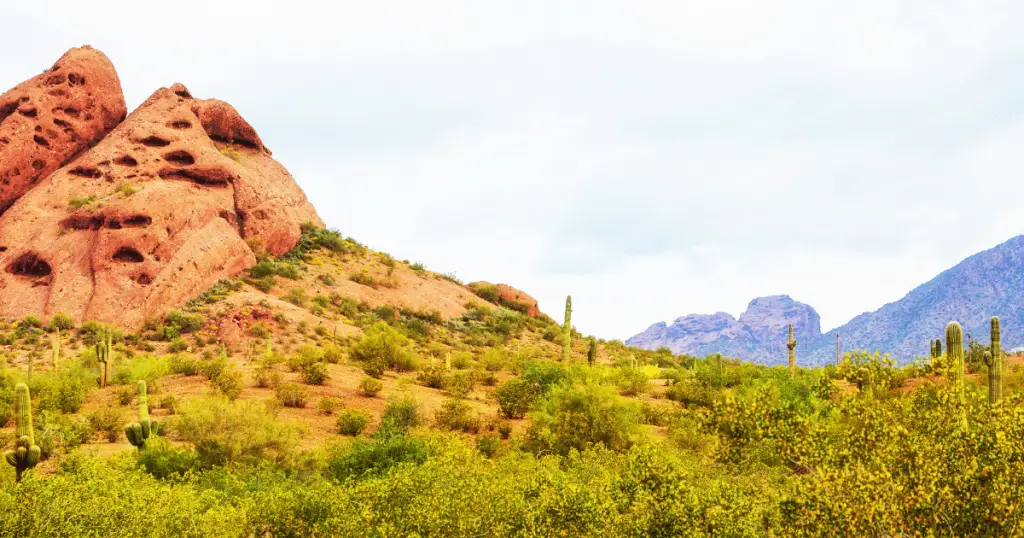
Desert Flora and Fauna
In the arid landscape of Papago Park, various hardy desert plants thrive, demonstrating the resilience of nature. The park is home to various vegetation uniquely adapted to survive in harsh desert conditions.
Dominating the park’s vegetative landscape is the iconic Saguaro cactus, capable of reaching heights equivalent to a five-story building. The whimsical shapes of these cacti and the beautiful blooms they produce have made them symbols of the American Southwest. Another common sight is Palo Verde trees, the green barks of which perform photosynthesis. Creosote bushes are also prevalent, known for the distinctive aroma they release after a rain.
Wildlife Encounters and Sightings
Papago Park is an oasis for desert animals, providing them with food, shelter, and water in the midst of a bustling urban environment. The park’s diverse vegetation supports a variety of bird species that rely on the nectar and seeds from the plants for sustenance.
Birdwatching Opportunities
Papago Park offers exceptional birdwatching opportunities. From the vibrant Gambel’s quail to the industrious Gila woodpecker, the park serves as a habitat for various bird species. Birdwatchers might also spot several species of hawks, owls, and the occasional roadrunner dashing across the trails.
Reptile and Mammal Species
The park is home to a rich assortment of reptiles and mammals. With their large ears designed to dissipate heat, Jackrabbits are a common sight. More elusive are the coyotes, who usually venture out during dusk or dawn. Reptile enthusiasts may encounter a variety of lizards, snakes, and the occasional desert tortoise.
Conservation Efforts in the Park
The park’s administration is dedicated to preserving the natural beauty and integrity of Papago Park. Various conservation initiatives, like habitat restoration and invasive species management, are regularly conducted. Additionally, park visitors are educated about responsible recreation practices to minimize environmental impact. These collective efforts ensure that Papago Park remains a cherished natural sanctuary for current visitors and future generations.
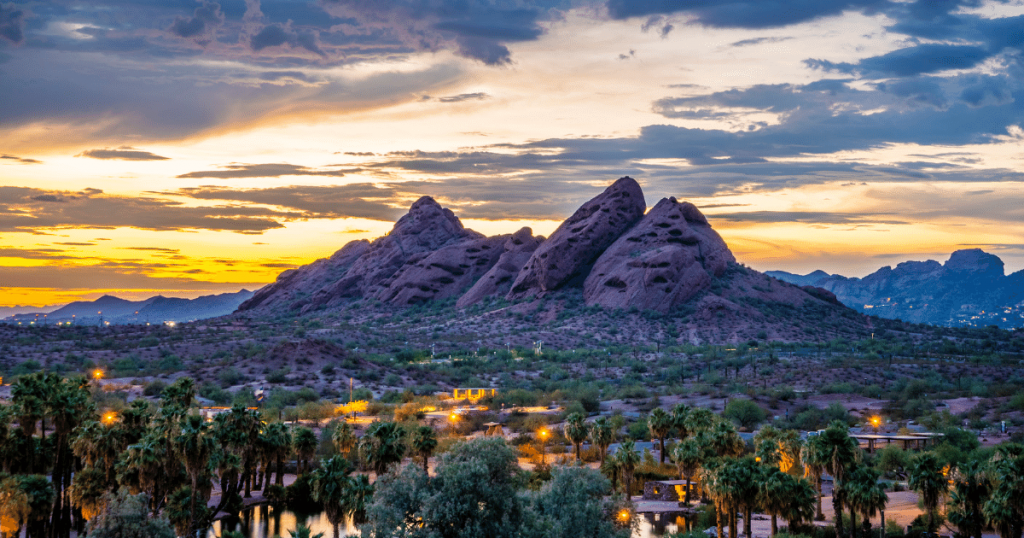
Hiking Experience at Papago Park Butte Loop
The experience of hiking at Papago Park is frequently described as a serene escape from the bustling city, with the park’s tranquil ambiance and breathtaking views of the desert landscape consistently praised by visitors.
Many hikers recount the thrill of ascending the buttes, followed by the tranquility that envelops them as they take in the panoramic vista of the Phoenix and Scottsdale skylines from the summit.
Bird watchers revel in the abundant birdlife, while photographers are drawn to the park’s surreal sunsets that bathe the sandstone buttes in a warm, golden glow.
Tips for Hikers
As the Sonoran Desert can get quite hot, the best times to hike in Papago Park are during the cooler months of October through April. Early morning or late afternoon hikes are also recommended to avoid the midday sun during the warmer months. Hikers are urged to pack plenty of water, wear sunscreen, and don comfortable footwear.
Exploring Nearby Attractions and Activities
Besides its hiking trails, Papago Park offers a host of other attractions. The Desert Botanical Garden nearby is a must-visit for plant enthusiasts, showcasing various desert flora. For history buffs, the Pueblo Grande Museum offers insights into the life and culture of the Hohokam people.
And let’s remember the Phoenix Zoo, one of the nation’s largest non-profit zoos, that’s just a stone’s throw away. Whether you’re a nature lover, a history enthusiast, or simply looking for a quiet place to unwind, Papago Park has something for everyone.
Conclusion: Papago Park Butte Loop in Phoenix
Papago Park Butte Loop stands as a testament to the beauty, diversity, and resilience of the Sonoran Desert, offering a captivating blend of geology, flora, fauna, and history. From the iconic saguaro cacti and elusive wildlife to the breathtaking buttes shaped by eons of erosion, the park serves as a spectacular natural canvas that showcases the unique charm of the American Southwest.
Whether hiking its trails, birdwatching, exploring the rich history of the Hohokam people, or simply soaking in the desert landscape’s tranquility, Papago Park will surely provide an enriching and unforgettable experience.

